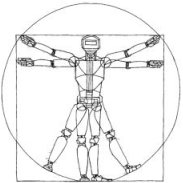Robotics: Science and Systems XII
Mathematical Tools for Analysis, Simulation and Design of Robotic Angular Encoders
Peter G. CramerAbstract:
A set of practical mathematical tools for creating self correcting, self compensating optical angular encoders is presented. Included is [a] a discussion and proof of the so-called Angular Encoder Theorem, which is the fundamental element of real time self correction based on read head symmetry aver- aging; [b] a discussion and derivation of the self-compensation equations, which can be used in tandem with the encoder theorem to increase accuracy further; [c] a kinematic model which can be used to simulate realistic operational scenarios; and [d] rules of thumb and implications for the designer. Sample simulation results and sample test results are also presented. These tools enable the designer to work out cost-effective encoder designs to meet different accuracy requirements for different applications. Such encoders automatically retain their accuracy over indefinite periods of time without human intervention of any kind and are thus well suited for challenging robotic applications. These tools can and have been used to construct cost-effective encoders with demonstrated sub-arcsecond accuracy. Finally, sample source code is available online.
Bibtex:
@INPROCEEDINGS{Cramer-RSS-16,
AUTHOR = {Peter G. Cramer},
TITLE = {Mathematical Tools for Analysis, Simulation and Design of Robotic Angular Encoders},
BOOKTITLE = {Proceedings of Robotics: Science and Systems},
YEAR = {2016},
ADDRESS = {AnnArbor, Michigan},
MONTH = {June},
DOI = {10.15607/RSS.2016.XII.028}
}
